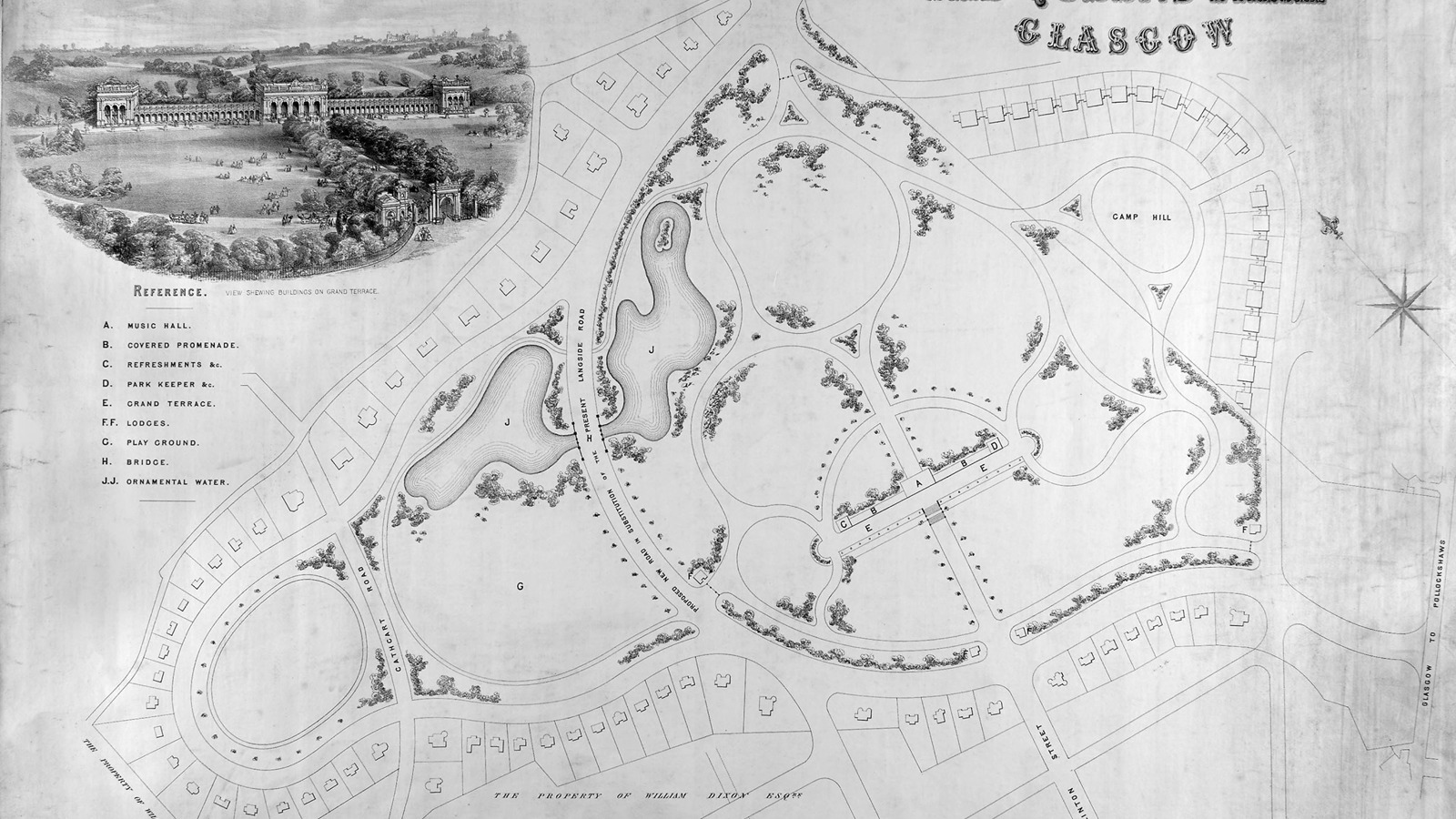Ask the Archivist - Parks
Our next topic helps explain Glasgow's label "dear green place": parks! The Q&A is below. You can also read a feature about these records in the Glasgow Times.
Q1: When was Glasgow Green established?
In 1450 James II made a grant of land to Bishop Turnbull of Glasgow and he in turn gifted it to the people for common grazing land. This gift was the foundation of the parks system of the city. The original Glasgow Green lay alongside the Clyde, to the west of the medieval Glasgow Bridge. The present Green was acquired piecemeal by the town council between 1662 and 1792. For many years it was used for communal purposes, for drying nets of the salmon fishers, bleaching of trade and private linen, and grazing cows.
Q2: When did Glasgow Green develop into park we know today?
In early 19th century Glasgow's east-enders complained about destruction of the natural beauty of the Green with the proximity of large public and manufacturing works, their fumes making the cultivation of even the most hardy species of plants very difficult. The Council began to meet demands of the citizens, improving the environment of the park area. New monuments were erected and features installed, including Nelson's Monument (1806), an adult gymnasium (1860) and four drinking fountains. The Doulton Fountain - the largest 3-storey terracotta fountain in the world - had been displayed at the 1888 International Exhibition.
Q3: When did the city expand its public park estate?
As Glasgow expanded it had an ambitious programme for the provision of parks in expanding areas of the city, for the recreation and amusement of citizens across the city. The earliest of these was Kelvingrove (land purchased 1852), the first purpose-designed and constructed park in Scotland, and Queen's Park (land purchased 1857), site of the 16th century Battle of Langside and dedicated to Mary Queen of Scots. Both parks were laid out by the world-renowned Sir Joseph Paxton, designer of the Crystal Palace in London. The first Glasgow Public Parks Act, 1859, enabled further purchases to be made. The Improvements Trust purchased land in 1866 for Alexandra Park to provide a park and recreation for the north-eastern part of the city. It had an open-air swimming pond, formed out of an old and disused freestone quarry. Thisgely patronised by the younger generations. By 1914 there were 18 major parks in the city.
Q4: What is the origin of the Botanic Gardens?
The Botanic Gardens were founded in 1817 by Thomas Hopkirk, a distinguished Glasgow botanist. Originally located at the Sandyford area of Sauchiehall St, the gardens moved to their present site in 1842. A very popular attraction, the public were eventually allowed entry at the weekends for fee of 1p. One of its most notable features is the Kibble Palace, originally built as a private conservatory in the home of John Kibble in Cove on Loch Long. An inventor and engineer, he began dismantling the glasshouse in 1872 and it was moved by barge to the Gardens in 1873. The Council took over the Gardens in 1891 when it annexed Hillhead, agreeing that they should continue as a Botanic Garden. The Botanic Gardens once had its own railway station, opened by the Council in 1896.
Q5: What was the Music in the Parks scheme?
The Music in the Parks initiative started in 1872 in four of Glasgow’s parks, with concerts performed by a handful of local military bands. In 1913 there were 392 performances with an estimated attendance of 1,897,000. By 1925 there were over 600 performances across 16 parks. There were for example regular concerts in Elder Park during the 1925 May to August season which were performed by local ensembles including Govan Silver Band, Tramways Orchestra, two Boys Brigade bands and the 1st Royal Scots Fusiliers. Sometimes there were visiting bands such as the Plymouth Marines Band who played in several parks in Glasgow during the 1925 season. These performances started at 7pm or 7.30pm on weekdays and lasted about an hour and a half. As part of the Cultural History of Glasgow project, we will be digitising a sample of Music in the Park programmes and park bandstand drawings on our website.
Q6: What facilities did parks offer?
In line with its early ambition to provide recreation and amusement for its citizens across the city, parks had many and varied facilities. These included gymnastic equipment, paddling pools, bowling greens, golf courses, tennis courts and football/hockey/rugby/cricket pitches.
Q7: Did the parks have wider gates and pathways to accommodate horses and carriages?
All the great parks across the UK and beyond have large wide gates for aesthetic and design reasons. Of course they did need to accommodate horses and carriages. There is a reference to this in respect of Glasgow Green when ‘good carriage roads’ and footpaths were formed in 1826 as the result of public subscription.

